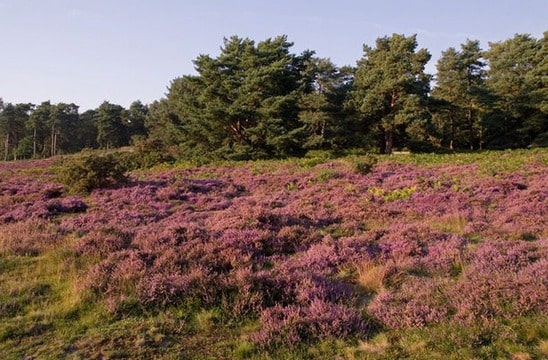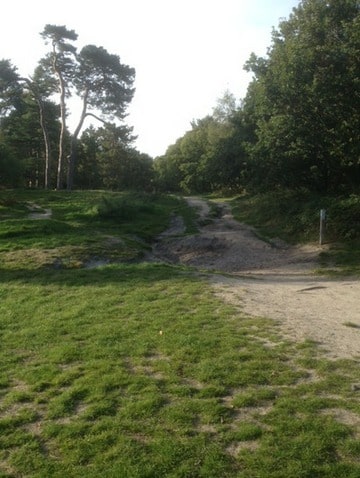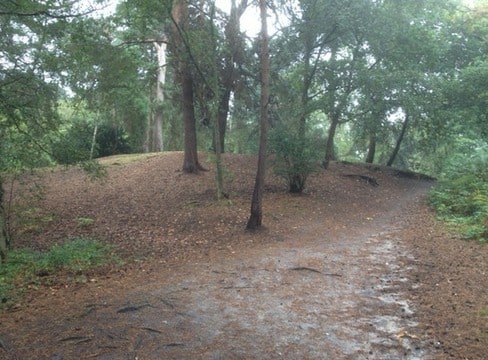Reigate Heath Tumulus EarthCache
-
Difficulty:
-

-
Terrain:
-

Size:  (other)
(other)
Please note Use of geocaching.com services is subject to the terms and conditions
in our disclaimer.
Reigate Heath Tumulus
Reigate Heath is designated a Site of Special Scientific Interest (SSSI), one of the most important wildlife designations nationally and a Local Nature Reserve (LNR).
It is an important example of the lowland heath habitat.

Lowland heaths can be divided into 3 main types according to soil moisture levels.
Wet heaths occur where the water table is naturally high, or where underlying impervious rocks or clay prevent water drainage. This leads to the water table being consistently near to the soil-surface level.
Dry heath occurs where the soils are free-draining and where the water table remains well below the soil surface at all times. Humid heath is intermediate between the two.
Species diversity within heathlands increases with soil moisture levels. Thus wet heaths normally support many more species than dry heaths.
Wet heath is characterized by the presence of Cross-leaved Heath (Erica tetralix), Purple Moor Grass (Molinia caerulea), and species of Sphagnum moss.
Dry heath is normally dominated by varying proportions of Heather (Calluna vulgaris), Bell Heather (Erica cinerea) and Gorse (Common, plus Western or Dwarf). A variety of grasses such as Bristle Bent (Agrostis curtisii) and Sheep's Fescue (Festuca ovina) are also characteristic.
Reigate Heath has both dry and wet heathland.

The heath comprises 51ha of extensive sandy heath gorse and heather, and is home to the Spider Hunting Wasp, which burrows in the footpaths.
Other local flora and fauna include Alder Buckthorn, Wild Foxglove Digitalis Purpurea, Stonechat, the Small Copper Butterfly, Adder, grass snake, common lizard and slow worm.
The site also has a number of Bronze Age burial mounds (3-5000 years old) which have been designated Scheduled Ancient Monuments.
In the United Kingdom, a scheduled monument is a 'nationally important' archaeological site or historic building, given protection against unauthorised change.
In the Bronze Age, the Heath was largely clear of trees. Around this time, a cemetery was established on the Heath; the burial mounds (tumuli) are still visible today

The Earthcache
The objective of this earthcache is to learn about the tumulus and surrounding heathland.
To log your visit at this earthcache, please email me the answers to the following questions:
1.What type of heathland is the area behind the notice board? Explain your answer..
2.Using the information above and your observations at GZ and also at the area mentioned in question 1, what type of heathland is the Tumulus on? Explain your answer..
3.What geological period is the tumulus from? (some internet research may be needed)
4. Take an elevation reading on top of the Tumulus. How many feet above sea level is it?
5. (Optional) Take a photo of yourself and your GPS at the Tumulus.
Enjoy your visit.
Additional Hints
(No hints available.)